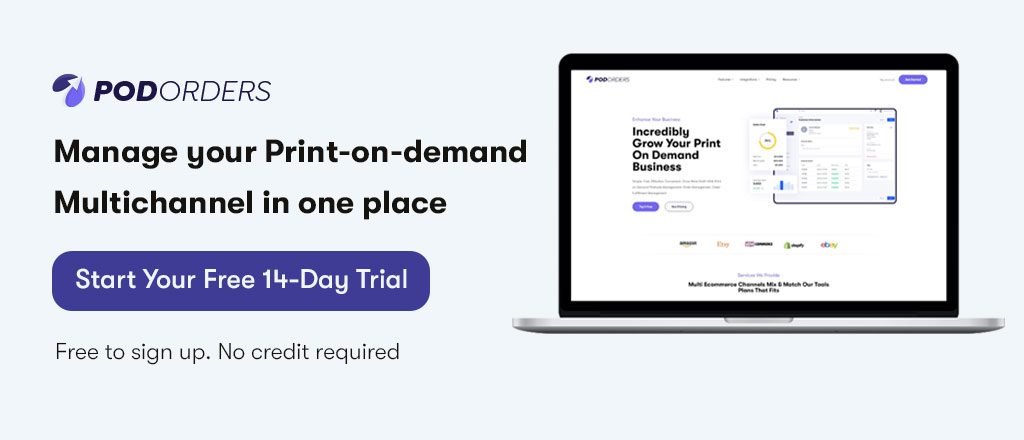Amazon is one of the most attractive sales marketplace globally, attracting millions of sellers around the world. Amazon has always wanted to boost competition and increase the presence of new sellers to drive innovation. From the A9 algorithm, Amazon upgrades with the Amazon A10 algorithm. It focuses more on consumer behavior than anything else. If your product sells more and is liked by more people, it will instantly stand out.
Understanding how the A10 algorithm works allow you to create the best sales strategy as well as boost rankings and profits. Here’s what you need to know about the Amazon a10 algorithm.
1. What Is The Amazon A10 Algorithm?
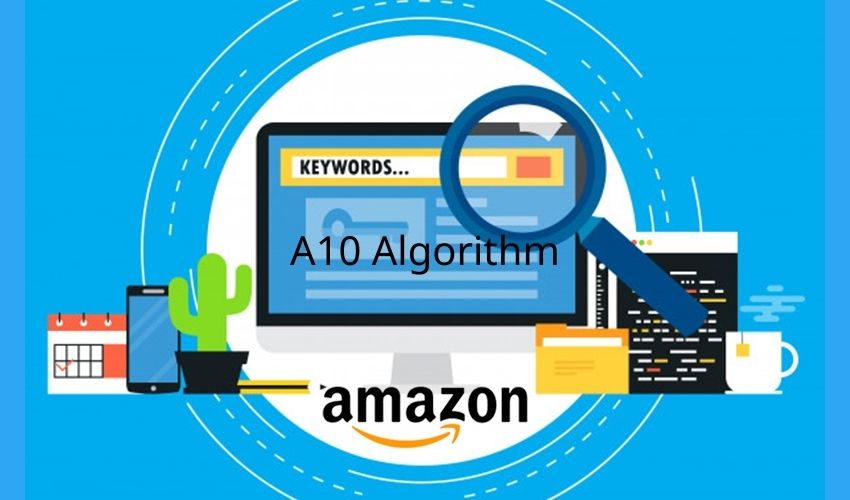
In December 2020, Amazon updates its search algorithm from A9 algorithm to A10 algorithm. There is an adjustment in input allowing product ranking once customers search for certain terms. It works the same way with A9, but with many significant changes that mainly focus on consumer behavior. That way, your competitors are likely to rank lower than you.
However, due to more focusing on customer searches, the importance of ads (sponsorship links) such as pay-per-click (PPC) in the Amazon A10 algorithm will be less than in the A9 algorithm.
The difference between Amazon A10 Algorithm and Amazon A9 Algorithm:
- Amazon a10 algorithm vs amazon a19 algorithm key factors affecting Keyword Rank which includes:
1. Seller Authority
2. Impressions
3. Sales Internal
4. PPC Sales
5. Click-Through Rate
6. Off-Site Sales
7. Conversion Rate
8. Sales History
9. Organic Sales
However, A9 only has 7 factors including:
1. Relevancy to searched keywords
2. Pricing
3. Conversions
4. Product listing completeness
5. Stock supply
6. Sales Rank
7. Reviews
- Reviews: The importance of positive feedback from sellers is emphasized more in the Amazon a10 algorithm than they đi with A9.
- Sponsored links: Amazon Algorithm sponsored links in A9 to have the potential to drive great product ratings. However, for A10, if your PPC campaigns are not strategic enough, they are unlikely to achieve much success.
- Product searches: Amazon A9 often prioritizes profitable products, and these tend to be the highest rated. The A10 algorithm has given maximum priority to relevant and 100% accurate products that will rank higher even if those products are not profitable.
- Click-through rate: According to the Amazon A10 Algorithm, click-through rate completely depends on relevant keywords and attractive images, the higher the CTR of your product, the more chances your product will rank high. This is very different from the A9.
2. How Amazon A10 Algorithm Work

A10 focuses more on customer searches: Amazon A10 Algorithm focuses on customer searches stronger and more relevant than Amazon A9. Instead of driving customers to more profitable products like the A9, A10 has made changes for the better, shifting the focus to providing customers with more accurate findings.
Sponsored links are less weighted: In A10 sponsored links are not as much important and successful as they used to be with A9. In other words, campaigns like pay-per-click (PPC) will get harder to be successful. However, that doesn’t mean that PPC campaigns are useless, they still bring great value, you need to take more time to create more strategic and sophisticated plans.
Seller authority is one of the most important factors in A10 that helps you have a varied inventory, a low return rate, and handling returns efficiently.
A10 focuses stronger on sales history: To increase your product rating A10 should consider strong sales history as a key factor, so your goal should be to maintain this rating. In general, to better product ranking, you need to take care of 9 factors, that’s how Amazon A10 Algorithm works.
Let’s take a look at the following set of ranking factors in the A10 algorithm in part 3.
3. Amazon A10 Algorithm – Core Pillar
What Factors Does the A10 Algorithm Use to Rank Products? In the Amazon A10 Algorithm, 9 following factors will be considered while a product is ranked in the search criterion. These are these core pillars that are important in helping the algorithm to rank products in search listings.
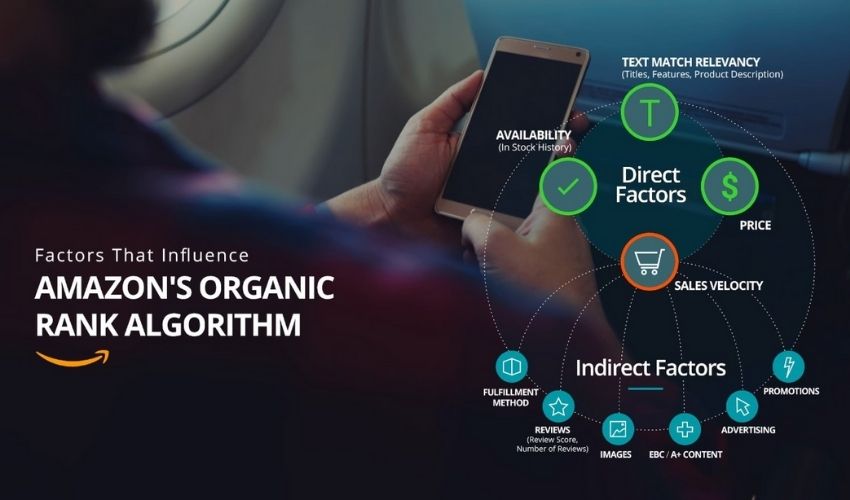
- Conversion rate: Conversion rate can be understood as the percentage of potential buyers who review a product and then actually buy it. It is clear that a high impression and click-through rate are not enough, because that’s not considered a successful conversion. A high conversion rate means your product is meeting the needs of your customers. The A10 algorithm focuses on this factor and of course, will have a good rating for that product.
- Impressions: The important question is how to improve impressions for your product? As a seller, focus on optimizing the product from the title, keywords, description so that your product is relevant to the search term. More impressions get better ratings, you can also use PPC internal advertising on Amazon to improve this factor.
- Organic sale: Organic sales are understood as sales generated through customers searching for products from search page results, without any marketing or advertising. This is another important factor that affects the Amazon A10 Algorithm. To meet this factor, it is very important to develop SEO campaigns, optimize keywords in product content so that your products easily appear every time customers search through keyword phrases.
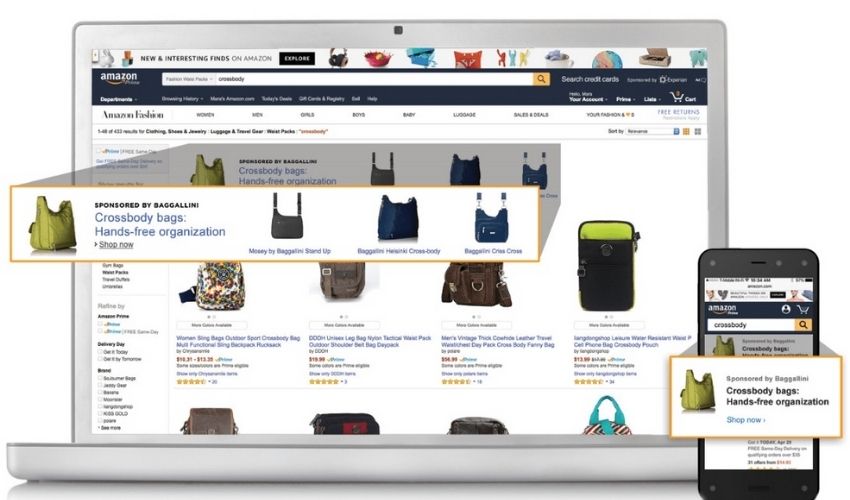
- Internal sales: Internal sales orders created in the Amazon platform are not through search results, they can be orders coming from the “Recommended Products”, “Similar Products” or “frequently bought with”. Such generated sales have a big influence on the search rankings.
- Sales history: This factor has appeared since the A9 algorithm before this. Amazon will review your entire sales history including evaluation factors for product quality as well as stock availability. To improve this factor, focus on creating quality sales history list content and the element of always in stock, only those who do FBA or Dropshipping on Amazon need to pay more attention.
- Off-Site sales: You post your product links on social networks, and other webs and generate sales from these links is known as Off-site Sales. Besides Amazon-sponsored advertising, sellers should know how to promote their products outside of Amazon to drive traffic to Amazon listings. This is the factor that affects keyword rankings in the Amazon A10 Algorithm, so the focus has shifted to consumer behavior more than ever.
- Seller Authority: This factor refers to the seller’s authority to control the Amazon Buy box or listing. This factor can be influenced by a number of factors such as how long a seller is active on Amazon, seller response ratings, seller performance metrics, number of products in the catalog, and more.
- PPC Sales: Different from the A9 algorithm, before you spend money running PPC ads will be “favored” by Amazon and rank you higher. But at the present time, the influence of PPC advertising has been relatively reduced. However, if you are a new seller, the use of PPC advertising is still really necessary.
- Click-Through Rate: How often your products are clicked when viewing search results. As an Amazon seller, you need to optimize product images for potential buyers to want to click. A higher click-through rate means that the Amazon A10 Algorithm understands that product is more relevant to the customer’s search intent and will rank higher.
4. Tips To Rank Higher With Amazon A10 Algorithm
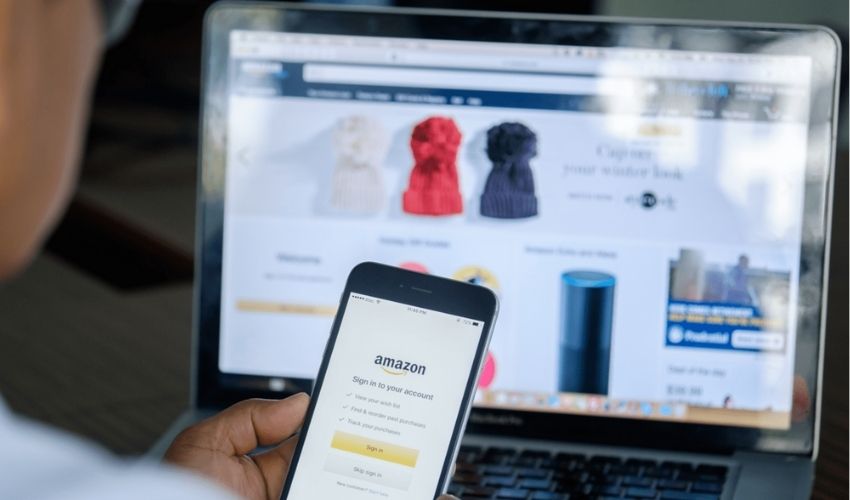
4.1 Strong SEO Strategy
With the organic search now one of the most important aspects the Amazon a10 algorithm considers when ranking your products. Therefore, research and development of SEO strategies play an important role.
- Optimize your Amazon listing title: As recommended by Amazon, your title should contain elements like Brand, Product Line, Material or key feature, Product Type, Color, Size, and Packaging / Quantity.
- Bullet points: Basically, any keywords that are not used in the title, from the main list you compiled earlier, will be included in the bullet.
- Description: Product description does not directly affect the rating. However, a well-written description will affect visibility, also conversions.
- Product image: Optimize the ratio of increased images. Besides an eye-catching image and easy quality enhance the conversion ability. These will greatly benefit your brand rankings and increase your overall sales.
4.2 Develop an External Traffic Strategy
The Amazon A10 algorithm focuses on the amount of external traffic coming to your page to rank for, however, brands tend to forget this tactic. As one wants to surpass competitors to rank at the top of search engines, researching and developing strategies to drive external traffic is essential.
Other benefits of Driving External Traffic to Amazon:
- Access to More Potential Customers: External traffic allows you to reach a whole new audience, which could be your potential customers coming your way.
- Increase sales and Profits: Besides waiting for customers at Amazon, having more potential customers from outside helps your sales to be boosted a lot.
- Build Customer List: Amazon offers a lot of advantages for e-commerce sellers, but there are some disadvantages that are difficult for sellers to have their own customer base because your shoppers on Amazon are all considered Amazon customers. You can hardly contact these customers, get their contact details and build a list.
4.3 Encourage Reviews

Positive reviews are a no-brainer kind of social proof. This has the strong power to have a great influence on purchasing decisions and assuaging fears about product quality. 84% of consumers trust online reviews just as much as they trust buying recommendations from friends. Customers also believe that positive reviews make them trust product quality more and make a purchase.
Reviews also help products get higher ratings with the Amazon a10 algorithm. A product with a lot of positive reviews often ranks much higher than a product with relatively few reviews. Therefore, encourage customers to leave a positive review for each purchase experience.
You can get more reviews by sending a personalized review request. This is the best way to encourage customers to leave reviews. Some customers do not have the habit of leaving a review after each purchase. If you provide quality products and good service, customers will feel free to leave reviews when you ask.
4.4 Set The Right Price
Setting the right Amazon price isn’t easy when you want to make more profit, but you also don’t want to scare consumers away. Trust is a major factor in conversions, and discounted pricing is a big part of that. Prices that are too high compared to competitors are likely to drive your customers away. However, they may notice something out of the ordinary if you deliberately set the price too low. Cheap products sometimes also mean low-quality products that may switch customers to another brand with a similar product.
To price the products you should:
- Consider your costs and fee: Calculating the selling price of a product based on 2 key factors: costs and the profit margin you hope to earn.
- Keep it flexible: Flexibility is important because the market is always changing, don’t advertise a default price.
4.5 Competitive Intelligence
Not being able to compete with the big players is likely because you don’t understand when and why consumers like the competition. Visit your competitor’s product pages to get a clear idea of what your competitors are doing about how they list their products, what keywords they focus on making customers choose them over you. This can help you improve your marketing programs based on customer feedback about competing businesses.
To efficiently research competitors, you should consider the following factors:
- Identify main competitors: You can easily find your competitors by using your product keyword to search and see whose products are showing.
- Analyze competitors’ online presence: after identifying your main competitors, find out if the User experience of their products, their listing is optimized? and more.
- Check online reviews: Find as many reviews of your competitors as possible. Read reviews and find out what customers appreciate. Negative feedback also helps you identify what to avoid.
5. Closing Thoughts
Hopefully, the above information about the Amazon A10 algorithm is useful for you. To increase revenue and beat competitors, better understand how the Amazon A10 algorithm works and which factors influence product ranking is really crucial.
Read more
- Amazon Seller Apps: Best Ones For Online Merchants In 2022
- Top 10 Amazon Pricing Strategies That Every Seller Should Know
- Woocommerce vs Shopify Comparison | Which Ecommerce Platform is the best for POD
- Overview Of 10 Best Multi-Channel eCommerce Software in 2022
- eBay Pricing Strategy: Top Things You Need To Know/a>

